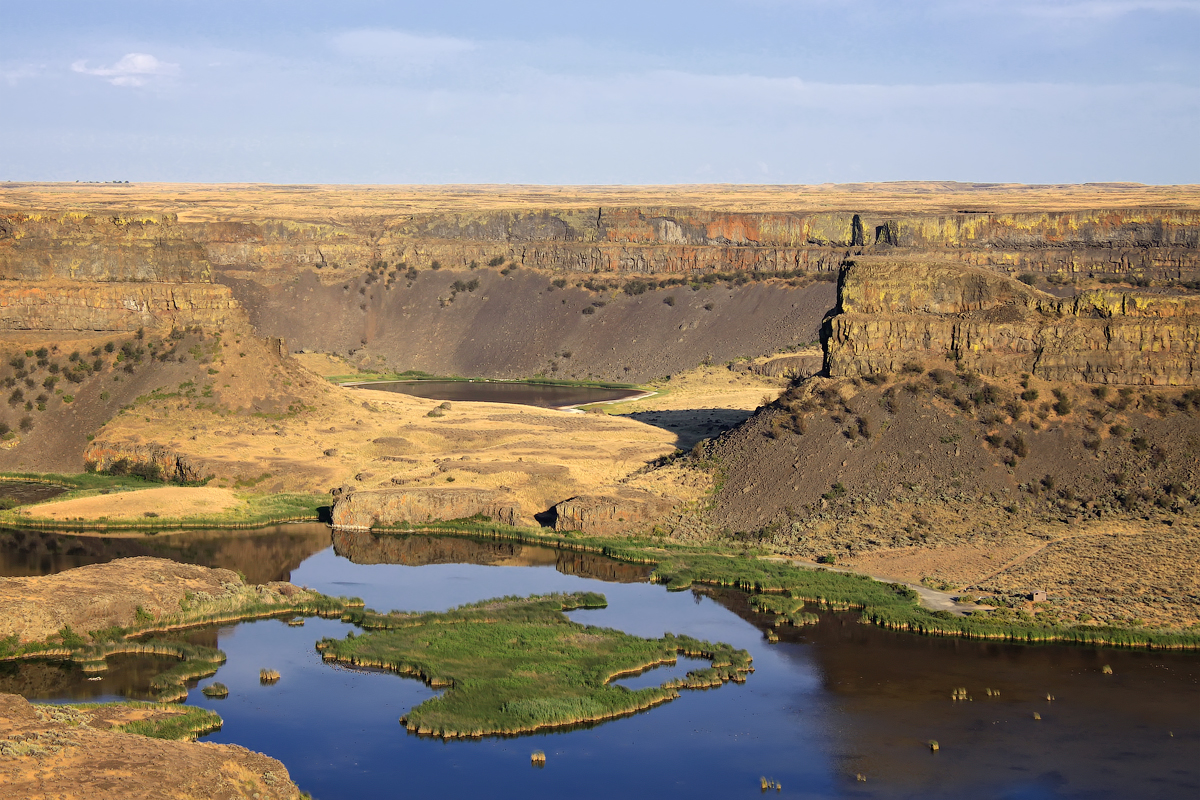Here’s a Glacial Lake Missoula Virtual Tour created by the Montana Natural History Center.

The water and ice carried giant boulders called “erratics” and deposited them all over Portland and the Willamette Valley.
Lake Missoula, a prehistoric lake in western Montana, existed periodically at the end of the last ice age and contained about 500 cu miles of water, half the volume of Lake Michigan.
The periodic rupturing of the ice dam resulted in the Missoula Floods – cataclysmic floods that swept across eastern Washington and down the Columbia River Gorge approximately 40 times during a 2,000 year period.
The flood started in the Idaho panhandle as a wall of water 2,000 feet high, bursting through the remnants of a glacial dam at 65 miles an hour. In volume, the deluge thundering across the Pacific Northwest was 10 times the combined flow today of all the rivers on Earth.
After a week or two, the flood subsided to normal river levels, the land around stripped bare. Halting recovery began in the ensuing years, vegetation getting a toehold on ravaged floodplains. Then, 30 to 50 years later, another flood would come.
This cataclysm happened as many as 100 times over the next 3,000 years, and helped shape the canyon we see today. Coulees are gouged-out canyons in the high desert of central Washington that now carry little or no flowing water. The two most spectacular are Moses Coulee and Grand Coulee.
Palouse Falls lies upstream of the confluence with the Snake River and Palouse River. The Palouse Falls and surrounding canyons were created when the Missoula Floods overtopped the south valley wall of the ancestral Palouse River, diverting it to the current course to the Snake River
Dry Falls, on the Upper Grand Coulee, channeled water at 65 miles per hour over its 400-foot rock face. It is estimated that the falls were five times the width of Niagara with ten times the flow of all the current rivers in the world combined.
The Bridge of the Gods was an actual land bridge, formed near present-day Cascade Locks, some 600 years ago. It was created by a major landslide of the Washington side that dammed the Columbia River, called the Bonneville Slide, where the current Bonneville Dam is located.
The river eventually breached the bridge and washed much of it away, but the event is remembered in local legends of the Native Americans as the Bridge of the Gods. The Washington landslide occurred around 1450, before the great earthquake of 1700.
In 2016, the Columbia River Highway turned 100 years old, the blink of an eye in geologic time. Today a journey through the Gorge remains breathtaking. The history is there for all to see. Vistas from 100 years ago are largely intact and the geologic history from 10,000 years ago and 10 million years ago remain.
Today, water resources in the Columbia Plateau are mapped using 3-D modeling to study potential groundwater characteristics.
The USGS web interface (below) allows users to explore a 3-D model of the Columbia Plateau aquifer.
The Paleontology (fossil) history is just as interesting.
The Columbian mammoth was one of the last in a line of mammoth species. Today closest relative of the Columbian mammoth is the Asian elephant.
Columbian mammoths were bigger than Woolly mammoths, and had short, bristly hair more like a modern elephant. They stood about 13 feet tall and grew enormous spiraling tusks, coexisting with Paleoamericans – the first humans to inhabit the Americas.
Unlike the Woolly mammoth, which lived in colder climates, no soft tissue has (yet) been found for the Columbian Mammoth. Geneticists are seeking to resurrect the Woolly mammoth. But Columbian mammoths lived in warmer habitats and roamed a swampier Northwest with camels, bear-sized ground sloths, American lions and saber-toothed cats and haven’t been preserved in ice.
The Discovery Center in The Dalles features a life-size 13-foot Columbian mammoth. Radiocarbon dating showed that mammoths may have survived on the Colorado Plateau until about 11,000 BP (Before Present). A Columbian mammoth tusk was discovered near Ridgefield just a few years ago.
The land and water resources created millions of years ago define our lives today and our future. Who knows, perhaps Columbian mammoths will roam the region in the future.










